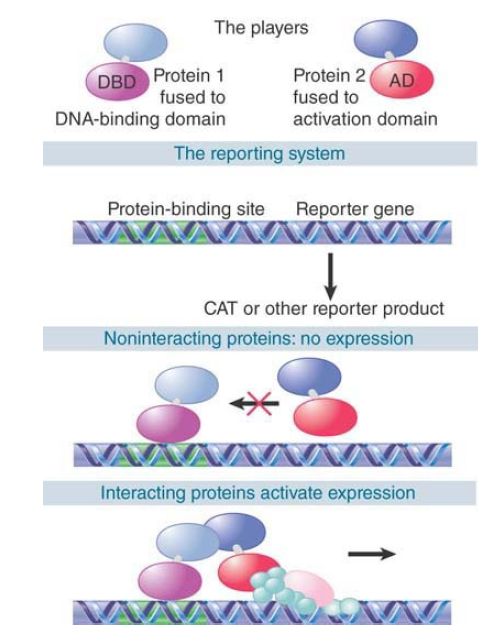

النبات

مواضيع عامة في علم النبات

الجذور - السيقان - الأوراق

النباتات الوعائية واللاوعائية

البذور (مغطاة البذور - عاريات البذور)

الطحالب

النباتات الطبية


الحيوان

مواضيع عامة في علم الحيوان

علم التشريح

التنوع الإحيائي

البايلوجيا الخلوية


الأحياء المجهرية

البكتيريا

الفطريات

الطفيليات

الفايروسات


علم الأمراض

الاورام

الامراض الوراثية

الامراض المناعية

الامراض المدارية

اضطرابات الدورة الدموية

مواضيع عامة في علم الامراض

الحشرات


التقانة الإحيائية

مواضيع عامة في التقانة الإحيائية


التقنية الحيوية المكروبية

التقنية الحيوية والميكروبات

الفعاليات الحيوية

وراثة الاحياء المجهرية

تصنيف الاحياء المجهرية

الاحياء المجهرية في الطبيعة

أيض الاجهاد

التقنية الحيوية والبيئة

التقنية الحيوية والطب

التقنية الحيوية والزراعة

التقنية الحيوية والصناعة

التقنية الحيوية والطاقة

البحار والطحالب الصغيرة

عزل البروتين

هندسة الجينات


التقنية الحياتية النانوية

مفاهيم التقنية الحيوية النانوية

التراكيب النانوية والمجاهر المستخدمة في رؤيتها

تصنيع وتخليق المواد النانوية

تطبيقات التقنية النانوية والحيوية النانوية

الرقائق والمتحسسات الحيوية

المصفوفات المجهرية وحاسوب الدنا

اللقاحات

البيئة والتلوث


علم الأجنة

اعضاء التكاثر وتشكل الاعراس

الاخصاب

التشطر

العصيبة وتشكل الجسيدات

تشكل اللواحق الجنينية

تكون المعيدة وظهور الطبقات الجنينية

مقدمة لعلم الاجنة


الأحياء الجزيئي

مواضيع عامة في الاحياء الجزيئي


علم وظائف الأعضاء


الغدد

مواضيع عامة في الغدد

الغدد الصم و هرموناتها

الجسم تحت السريري

الغدة النخامية

الغدة الكظرية

الغدة التناسلية

الغدة الدرقية والجار الدرقية

الغدة البنكرياسية

الغدة الصنوبرية

مواضيع عامة في علم وظائف الاعضاء

الخلية الحيوانية

الجهاز العصبي

أعضاء الحس

الجهاز العضلي

السوائل الجسمية

الجهاز الدوري والليمف

الجهاز التنفسي

الجهاز الهضمي

الجهاز البولي


المضادات الميكروبية

مواضيع عامة في المضادات الميكروبية

مضادات البكتيريا

مضادات الفطريات

مضادات الطفيليات

مضادات الفايروسات

علم الخلية

الوراثة

الأحياء العامة

المناعة

التحليلات المرضية

الكيمياء الحيوية

مواضيع متنوعة أخرى

الانزيمات
The Two-Hybrid Assay Detects Protein–Protein Interactions
المؤلف:
JOCELYN E. KREBS, ELLIOTT S. GOLDSTEIN and STEPHEN T. KILPATRICK
المصدر:
LEWIN’S GENES XII
الجزء والصفحة:
9-6-2021
2112
The Two-Hybrid Assay Detects Protein–Protein Interactions
Key concept
- The two-hybrid assay works by requiring an interaction between two proteins, where one has a DNA-binding domain and the other has a transcription-activation domain.
The model of domain independence is the basis for an extremely useful assay for detecting protein interactions. The principle is illustrated in FIGURE 1. One of the proteins to be tested is fused to a DNA-binding domain. The other protein is then fused to a transcription-activating domain. This is accomplished by linking the appropriate coding sequences in each case and making chimeric proteins by expressing each hybrid gene.

FIGURE 1. The two-hybrid technique tests the ability of two proteins to interact by incorporating them into hybrid proteins,where one has a DNA-binding domain and the other has a transcription-activating domain.
If the two proteins that are being tested can interact with one another, the two hybrid proteins will interact. This is reflected in the name of the technique: the two-hybrid assay. The protein with the DNA-binding domain binds to a reporter gene that has a simple promoter containing its target site. It cannot, however, activate the gene by itself. Activation occurs only if the second hybrid binds to the first hybrid to bring the activation domain to the promoter. Any reporter gene can be used where the product is readily assayed, and this technique has given rise to several automated procedures for rapidly testing protein–protein interactions.
The effectiveness of the technique dramatically illustrates the modular nature of proteins. Even when fused to another protein, the DNA-binding domain can bind to DNA, and the transcriptionactivating domain can activate transcription. Correspondingly, the interaction ability of the two proteins being tested is not inhibited by the attachment of the DNA-binding or transcription-activating domains. (Of course, there are some exceptions for which these simple rules do not apply, and interference between the domains of the hybrid protein prevents the technique from working.)
The power of this assay is that it requires only that the two proteins being tested can interact with each other. They need not have anything to do with transcription (in fact, if the proteins being tested themselves are involved in transcription, it can frequently lead to false positives, as a single hybrid may work as an activator). As a result of the independence of the DNA-binding and transcriptionactivating domains, all that is required is that they are brought together. This will happen so long as the two proteins being tested can interact in the environment of the nucleus.
 الاكثر قراءة في مواضيع عامة في الاحياء الجزيئي
الاكثر قراءة في مواضيع عامة في الاحياء الجزيئي
 اخر الاخبار
اخر الاخبار
اخبار العتبة العباسية المقدسة

الآخبار الصحية















 قسم الشؤون الفكرية يصدر كتاباً يوثق تاريخ السدانة في العتبة العباسية المقدسة
قسم الشؤون الفكرية يصدر كتاباً يوثق تاريخ السدانة في العتبة العباسية المقدسة "المهمة".. إصدار قصصي يوثّق القصص الفائزة في مسابقة فتوى الدفاع المقدسة للقصة القصيرة
"المهمة".. إصدار قصصي يوثّق القصص الفائزة في مسابقة فتوى الدفاع المقدسة للقصة القصيرة (نوافذ).. إصدار أدبي يوثق القصص الفائزة في مسابقة الإمام العسكري (عليه السلام)
(نوافذ).. إصدار أدبي يوثق القصص الفائزة في مسابقة الإمام العسكري (عليه السلام)


















